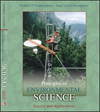El Niño and Ocean/Climate Conditions
Before doing this exercise review the El Niño discussion, p. 199, in your
text.
Then visit the web site http://www.ssmi.com/ssmiMonthly.html.
Satellite images are one of the principal ways scientists map and monitor environmental
conditions worldwide. This exercise uses satellite data gathered by the federal
government for a variety of environmental monitoring purposes. This web site
is one of many excellent sources providing up-to-date environmental data. The
monthly "static data" web site provides graphic images of satellite data. If
you are using a slow server, you may want to save a few of the images on your
computer in order to answer the questions below.
For the questions below you will mostly be looking at atmospheric water vapor,
or humidity. Keep this in mind: humidity is higher where evaporation is high.
So high humidity indicates warm water; low humidity indicates cooler water.
The SSMI monthly data page lets you select a month and year to view, with 4
types of atmospheric information.
1. What are the 4 types of information shown? What units are used to measure
these data types? (How fast is one wind speed unit compared to how fast you
walk?)
2. Look at the Atmospheric Water Vapor map for the current month. Bright red and yellow colors indicate high humidity in the air--and high temperatures.
Where is the greatest concentration of red and yellow?
3. Look at October 1999. Then change to October 1998 (each time you change
years or months you must click on the DISPLAY button to redraw). Sketch on a
piece of paper the general location of the red concentration in the Indian and
Pacific oceans in 1999 and in 1998. How do the two years differ?
4. Now look at the wind speed maps for 1998 and 1997. Which year has the lowest
wind speeds in the Pacific Ocean? In the Indian Ocean? Can you think of how wind speeds
and ocean temperatures might be related?
5. Go backward, year by year, to see how the concentration of red changes over
the years. Mark an X on the graph below for each year marking the approximate
location of the biggest red concentration in the Pacific Ocean. During which
years does the region of strong red/yellow expand farthest eastward?
1989
1990
1991
1992
1993
1994
1995
1996
1997
1998
1999
2000
Indonesia Central Pacific Eastern Pacific
6. If you have a fast network connection, start with January 1997 (or an
earlier year) and hit the "next month" button to watch conditions change through
the years. At what month do the 1998 El Niño conditions really start to develop? | 


 2002 McGraw-Hill Higher Education
2002 McGraw-Hill Higher Education